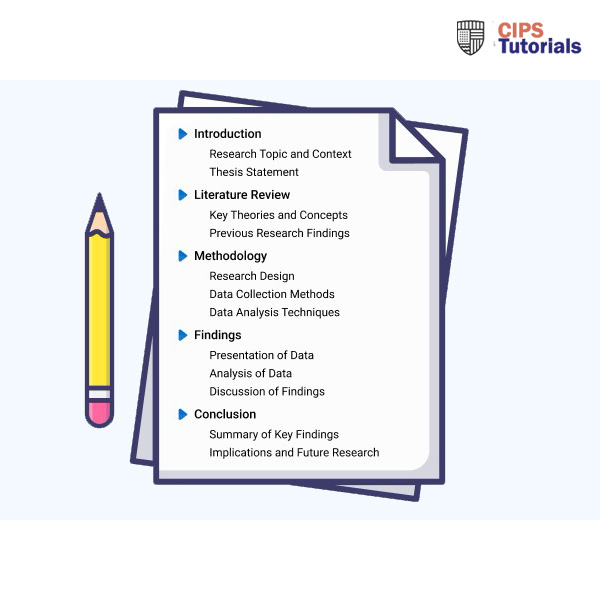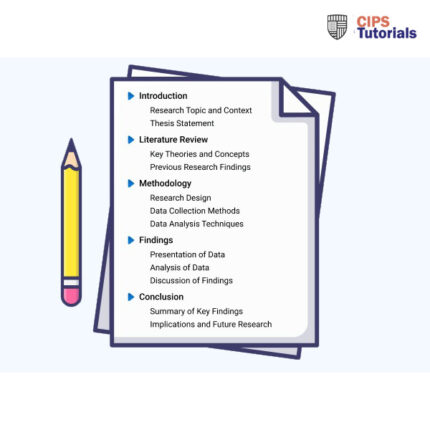Description
Solution
| Evaluate the concept of evidence-based practice including how it can be applied to decision-making in people practice. (AC 1.1)
Short references should be added into your narrative below. Please remember to only list your long references in the reference box provided at the end of this section. Word count: Approximately 450 words
|
|
Evaluation of Evidence-Based Practice EBP is an organised and systematic approach to decision-making that aims to avoid frequent mistakes, such as basing judgements exclusively on intuition, gut feelings, or prior experiences (CIPD, 2023) It entails a mindset that combines data and evidence to get well-informed judgements. Organisations may make simpler, fair, and efficient choices that help both people and the organisation using critical thinking and the best available information. One advantage of EBP is that it improves organisational performance and efficiency by using validated and proven EBP practices. However, it necessitates training and implementation resources, which can be costly and time-consuming in the short run. Approaches to Evidence-Based Practice Metrics, Key Performance Indicators (KPIs), and performance data gathered inside the organisation are examples of organisational data that may offer helpful insights into employee performance, engagement levels, and other important factors (Pietrantoni et al., 2023). Analysing this data makes finding patterns, trends, and opportunities for improvement in people’s practises possible. Additionally, various information and discoveries on different people’s practises, and organisational challenges may be found in scientific literature, including credible publications and research papers. By consulting this literature, decision-makers may get the most recent research and evidence-based solutions to problems. Expertise and judgement of experts is another strategy. Internal subject matter experts have important insights into the organisation’s particular difficulties and environment. Involving these professionals in decision-making processes enables a more thorough comprehension of the effects of various actions. Finally, stakeholder engagement promotes a more inclusive decision-making process by involving stakeholders interested in and influencing the decisions. Organisations may make well-rounded and knowledgeable choices by embracing the viewpoints and expertise of different stakeholders. Practical Application – People Practice: Adopting a new performance management strategy, such as implementing a 360-degree assessment system, is one real-world example of applying EBP to people’s practices. In this case, data from organisational performance measures are combined with information from internal specialists, scientific research on successful performance management techniques, and stakeholder input. The new performance management plan will be evidence-based and in line with the organisation’s goals thanks to this all-encompassing approach, which will enhance employee performance and boost overall organisational success. Practical Application – Organisational Issue: Evidence-based practice may help solve organisational difficulties like raising employee engagement levels to boost productivity (Mohammed & Aly, 2021). Decision-makers may create a data-driven engagement plan by looking at organisational engagement statistics, evaluating pertinent scientific research, consulting internal experts, and involving stakeholders. With this approach, the problem of low engagement will be more effectively addressed, resulting in a more motivated and effective staff. Talent acquisition and recruitment are key issues in human practice. Making informed decisions in this field relies heavily on evidence-based practice. Using empirical evidence to choose the proper employees can considerably improve the selection process (Mohammad, 2020). Analysing historical data on successful individuals inside the organisation, for example, can assist in identifying the important talents, qualities, and qualifications that correspond with job performance. Furthermore, studies on effective recruitment tactics, such as organised interviews or psychometric evaluations, can help inform decision-making. Evidence can be taken from various sources, including internal performance data, external research, and industry benchmarks, to build a solid framework for evaluating job applications. By implementing evidence-based practices, employers can make better hiring decisions and achieve better long-term performance results (Reid, 2023). The Definition of Evidence-Based Practice (EBP) EBP is an approach that is used in improving decision-making where the people apply the best available data from a variety of relevant sources judiciously, conscientiously and explicitly, to make sure that the decisions have an increased likelihood of rendering the desired outcomes (CIPD, 2023). People professionals are advised to consider a minimum of four sources of data which comprise scientific literature, organisational data, expertise and judgement of professionals and stakeholder values. An Evaluation of EBP EBP is considered important to people practice because it ensures data-driven, systematic and consistent decision-making bringing effective and sustainable decisions (Boatman, 2024). This is by using reliable data to eliminate influences by natural bias, and short-term fads to design unbiased solutions. EBP is also important because it allows effective risk management because data allows one to forecast happening and adequately prepare for issues and opportunities. CEBMa (n.d) states that the limitation of EBP is that the required reliable evidence may not be available to make credible decisions, for instance when deciding on matters to do with new HR technologies. Also, this practice is limited by the fact that the process is time-consuming. How EBP Can Support Sound Decision-Making and Judgement for;
Learning and Development – Outdated Learning Programs When using EBP to solve this issue, organisational data is gathered from the workforce and the management to identify what learning programs are outdated, and the preferred solutions. The people professionals may then consult scientific literature to identify how other studied organisations resolved the matter. Then, finally, the people practitioners consult experts to identify the modern solutions being used in contemporary workplaces like the use of e-learning, allocating more time for CPD, social learning and personalised learning programs, where the most effective solution for the organisation is selected. Resourcing Issue – Staff Skill Shortage When resolving staff skill shortages, people practitioners gather organisational data from the management and the employees on the skill gaps in the organisation. Then, they could consult recruitment experts to conduct a situational analysis of the labour market. All the data sets are analysed, and the development of the most feasible alternatives to resolve the skill shortage such as introducing trainee programs, improving employee retention and training the existing workers follows, which are evaluated before implementation.
Resolving Low Productivity Issues When an organisation experiences low productivity, the management should first gather organisational data and stakeholder views through surveys and interviews, where the causes of low productivity could be established to be the lack of certain equipment and technical skills. The relevant stakeholders could consult experts and brainstorm alternatives for the organisation where they would consider getting more resources to acquire the equipment needed for higher productivity or enrol the employees in learning institutions to help them acquire the required skills.
|
| Evaluate a range of analysis tools (One) and methods (One) including how they can be applied to diagnose organisational issues, challenges and opportunities. (AC 1.2)
Short references should be added into your narrative below. Please remember to only list your long references in the reference box provided at the end of this section. Word count: Approximately 400 words
|
Please click the following icon to access this assess this assessment in full
Related Papers
(Solution) CIPD 5CO02 measure the impact and value of people practice
(Solution) New 7C001 Level 7 Question 16 Becoming a True Equal Opportunity Employers Through Formal Measures to Tackle unconscious Bias
(Solution) CIPS ADNOC Sourcing Essentials PSE
- For the current report, the sourcing approaches identified and in-depth explained are informed by the ADNOC chemicals sourcing.
- In tandem with the different spend categories, different sourcing approaches for the spend have been applied with a supplier appraisal generated at the end.
- Through an in-depth analysis, sourcing strategies evaluating in areas of multiple, single, dual and sole. For procuring the chemicals, multiple sourcing is the best practice due to the procurement process characteristic.
- As evidenced from Kraljic analysis matrix, suppliers relations are noted with chemicals procurement being a leverage category.
- The Carter’s 10Cs model is applicable to pursue suppliers appraisal for chemicals sourcing supplier appraisal.
(Solution) CIPS TAQA Water Solutions Sourcing Essentials (PSE)
(Solution) CIPS New Global Strategic Supply Chain Project
- The purpose of this project is to evaluate supply chain automation by leveraging Industry 4.0 technologies. The identified technologies include Artificial Intelligence (AI) and Machine Learning (ML) noted as critical for streamlining operations and obtaining value-for-money outcomes. This has been pursued by focusing on Wood Plc.
- To conclude, the generated findings of this report evidence WPC is today adopting the application of iSourcing in their procurement and supply management (PS&M).
- In the current project, through an evaluation of options for automation of the organization PS&M, the findings evidence the existence of different limitations hindering the success of their system. The issues of cost overruns, lack of collaboration, and inefficient supply chain as the organization is expanding its current operations have been noted to include limitations of their current sourcing.
- Success in the automation of their supply chain has been identified to lead to the following outcomes;
- Organisation achievement owing to automation of their supply chain, increased confidence and capability, talent management, and employee competency
- Improved stakeholders relations (a later section of stakeholders analysis) easing the change process. Through the iSourcing improvement, WPC would be in a position of harnessing technical and commercial evaluation processes.
- Increased and robust systems and policies which mitigate overall gaps in sourcing system transformation
- Today, only lower than 10% of the entire WPC resources are used to prioritize automation and IT integration successfully. Automation would improve the use of resources in their operations
- Involve their IT and finance departments to ensure within a period of 6 months they
- WPC needs to consider embracing sustainable practices as part of investing in their Industry 4.0 technologies
- Through the adoption of automation, better communication systems backed by AI and ML would be introduced to achieve 70% increased communication effectiveness.
- It is important to increase this through increasing collaboration and alignment of all their interests holistically
- Partnering with institutions for the provision of capacity development opportunities for the PS&M teams and other organizations for the success of the automation process
- Expanding their sourcing of Industry 4.0 technologies. This is to involve highly reputable global companies hence efficient operations and integration of AI
- Source of support from the government to ensure that they are facilitated in terms of policies and appropriate regulations to guide the automation process.


